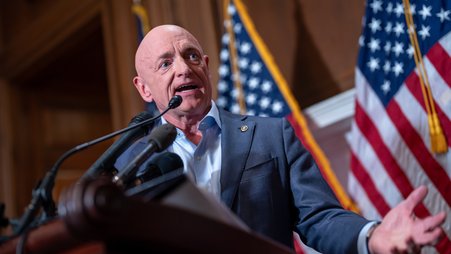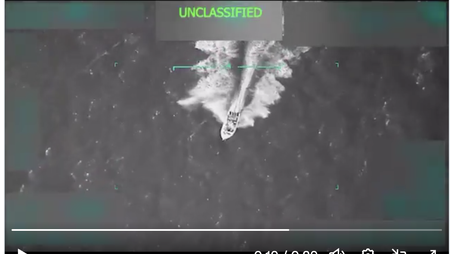The U.S. keeps too many secrets about its actions in the aftermath of 9/11. There’s no better example of this than the CIA’s torture program, which can trace its beginnings to a still-classified September 2001 memorandum of notification signed by President George W. Bush. This memo granted the agency “unprecedented authorities” to capture and detain suspected terrorists.
The outgoing Biden administration should commemorate the 23rd anniversary of the terrorist attacks by ordering the declassification of the Senate’s report on the CIA’s torture program. A fitting date for the declassification to be completed is Sept. 11, 2026 — the 25th anniversary of the attacks. This would not only help the public hold the government accountable for abhorrent human rights violations but would counter overwhelming evidence that the CIA has become too powerful for oversight.
The CIA knowingly destroys torture evidence
The late Sen. Dianne Feinstein, D-Calif., initiated what would become the Senate Select Committee on Intelligence’s Torture Report — arguably the most consequential congressional report ever compiled — after word emerged that the CIA had destroyed key evidence of its torture program.
The initial Senate investigation began in 2007, after Feinstein and her committee received a briefing from then-CIA Director Michael Hayden. The briefing concerned a 2005 order by CIA official Jose Rodriguez, who ran the agency’s torture program, to destroy 92 videos of agency officials waterboarding Abu Zubaydah. Rodriguez ordered the destruction of the evidence even after he and his then-chief of staff “repeatedly sought permission to have the tapes destroyed but were denied.” (His chief of staff at the time was Gina Haspel, who went on to run the agency despite her own concerning record on torture.)
Rodriguez later justified his behavior, saying that “the heat (from destroying the videos) is nothing compared to what it would be if the tapes ever got into the public domain.”
The Department of Justice investigated the destruction of the videotapes at least twice, but no charges were ever brought.
Congress tries to document abuse
The Senate Intelligence Committee voted to broaden its investigation beyond the videotape destruction in 2009, with Senate staff ultimately reviewing over 6 million pages of records across five years and producing the 6,700-page report.
This mammoth achievement was accomplished in spite of the CIA 1) misleading Congress and the White House about the program, 2) pushing misleading narratives about the torture program to the media, and 3) spying on Senate staff who were attempting to conduct oversight of the program. (After first denying it even happened, former CIA director John Brennan eventually apologized for the spying, but the agency and responsible officials faced no meaningful disciplinary measures).
The Senate Intelligence Committee shared the report with several federal agencies and the Obama White House with the eventual hope that it would be public. But a byzantine — and ultimately ineffective — effort to have the report declared a federal record subject to the Freedom of Information Act and eventually disclosed to the public failed under President Obama’s watch.
Litigation brought by members of the public has also proved unsuccessful. As recently as this summer, the U.S. Court of Appeals for the District of Columbia upheld the classification of the full report as a legislative branch record exempt from disclosure by the Constitution’s speech or debate clause.
The final report is still secret, but the conclusions from the 500-page, highly redacted executive summary are so damning they demand further disclosure. The findings include:
- The CIA’s own officers found torture to be ineffective and the agency failed to adequately evaluate its techniques.
- The CIA lied to lawmakers about the brutality of its program and the conditions of detainees’ confinement.
- The Department of Justice’s Office of Legal Counsel did not independently verify or conduct independent analysis of the CIA’s claims.
- The CIA’s management of the torture program hindered other national security missions.
- The CIA’s torture program damaged the United States’ global standing.
Is the CIA too powerful for oversight?
Additional bits of information about the torture program have come to light through Freedom of Information Act lawsuits. These revelations include:
- Photos of torture and abuse at Abu Ghraib prison.
- Detainee transcripts of torture.
- Information on conditions that led to the death of detainee Gul Rahman at a CIA black-site prison in 2002.
- Torture cables that were either authored or authorized by Haspel.
These piecemeal disclosures are not enough.
For the public to effectively self-govern, it must be able to engage in meaningful public debate about U.S. actions. It cannot do so if agencies like the CIA are allowed to flout congressional oversight and willfully destroy important documentary evidence with no meaningful consequence.
President Biden has the opportunity to make a difference. He should do what President Obama did not, and mandate the declassification of the torture report. In so doing, he could help show the CIA is not more powerful than Congress, the White House, or the best interest of the public.
***
More resources
Researchers and journalists should visit the following for reputable information on torture:
- The Rendition Project
- The National Security Archive’s Torture Archive
- The ACLU’s torture court cases website
- Carol Rosenberg’s reporting on Guantanamo Bay for both The New York Times and the Miami Herald





